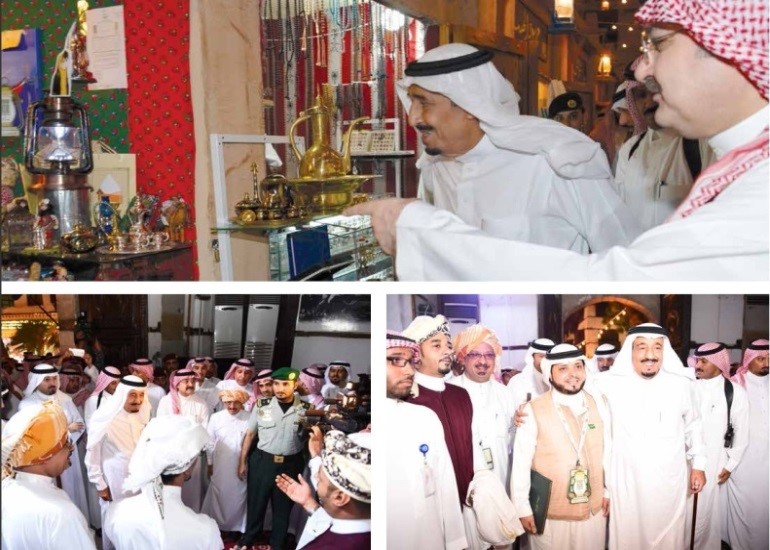The Historic Core of Jeddah
Al-Balad, located on the eastern shores of the Red Sea, is a historic city that gained prominence in the 7th century as a major port on the Indian Ocean trade routes and a gateway for Muslim pilgrims to Mecca. Known for its unique Red Sea architectural style, the city features tower houses built in the late 19th century, decorated with large wooden Roshans. These structures reflect the wealth and artistry of the mercantile elite. Historic Jeddah encompasses grand tower houses, coral stone houses, mosques, and vibrant marketplaces, representing a blend of cultural influences and architectural styles, and stands as a testament to the region's rich heritage.
Historical Places in Jeddah
The historic core of Jeddah consist of a number of historical and heritage structures. In these historical places old Jeddah wall and its gate, mosques, monuments, historical Jeddah houses, haret (Quarter), souks are present. All these structure are important due to their old and unique cultural and Islamic architecture style. Brief discussions about these places are here.
Old Jeddah Wall
The "Old Wall of Jeddah", was originally built in 1509 by Mamluk Sultan Al-Ghori. This fortification was a response to threats from Portuguese attacks, playing a pivotal role in the city's preservation. The wall, not of regular shape but adapted to the topography, featured six gates, each named after a destination it faced. Despite its demolition in 1947 to accommodate urban expansion, the wall's legacy continues to shape Jeddah's historical district, Al-Balad. Efforts have been made to preserve this area, including attempts to list it as a UNESCO World Heritage Site. The wall's historical importance is reflected in its influence on Jeddah's urban and architectural development, contributing to the city's unique character and heritage.
Harets
Jeddah city was arranged into different neighbourhoods and each is called Haret. The Haret name was given by the local communities of Al-Balad district due to its geographic and historic background in the city. Al-Mazloum, Al-Sham, Yemen lanes are some well reputed Harets. There is an administrator for every Haret who is called Umdah. He deals the affairs of each Haret with the help of public cooperation. This administrator also gives a social and legal support to the Haret which is necessary for the community and safety of the neighboured.
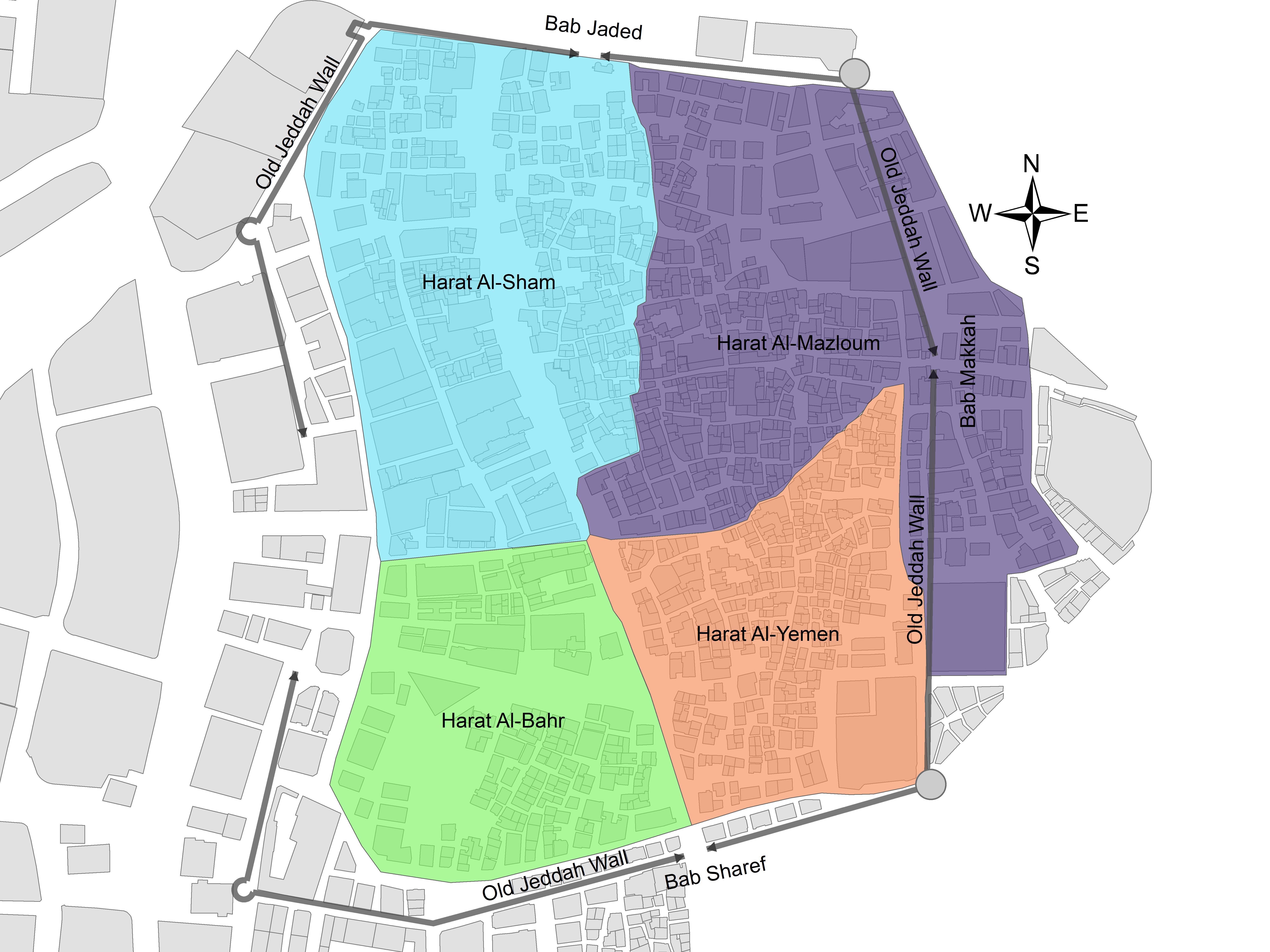
Zogag
Zogag are the peaceful and fine lanes in the residential areas. These narrow alleys mostly cover the surroundings of mosques and family houses.
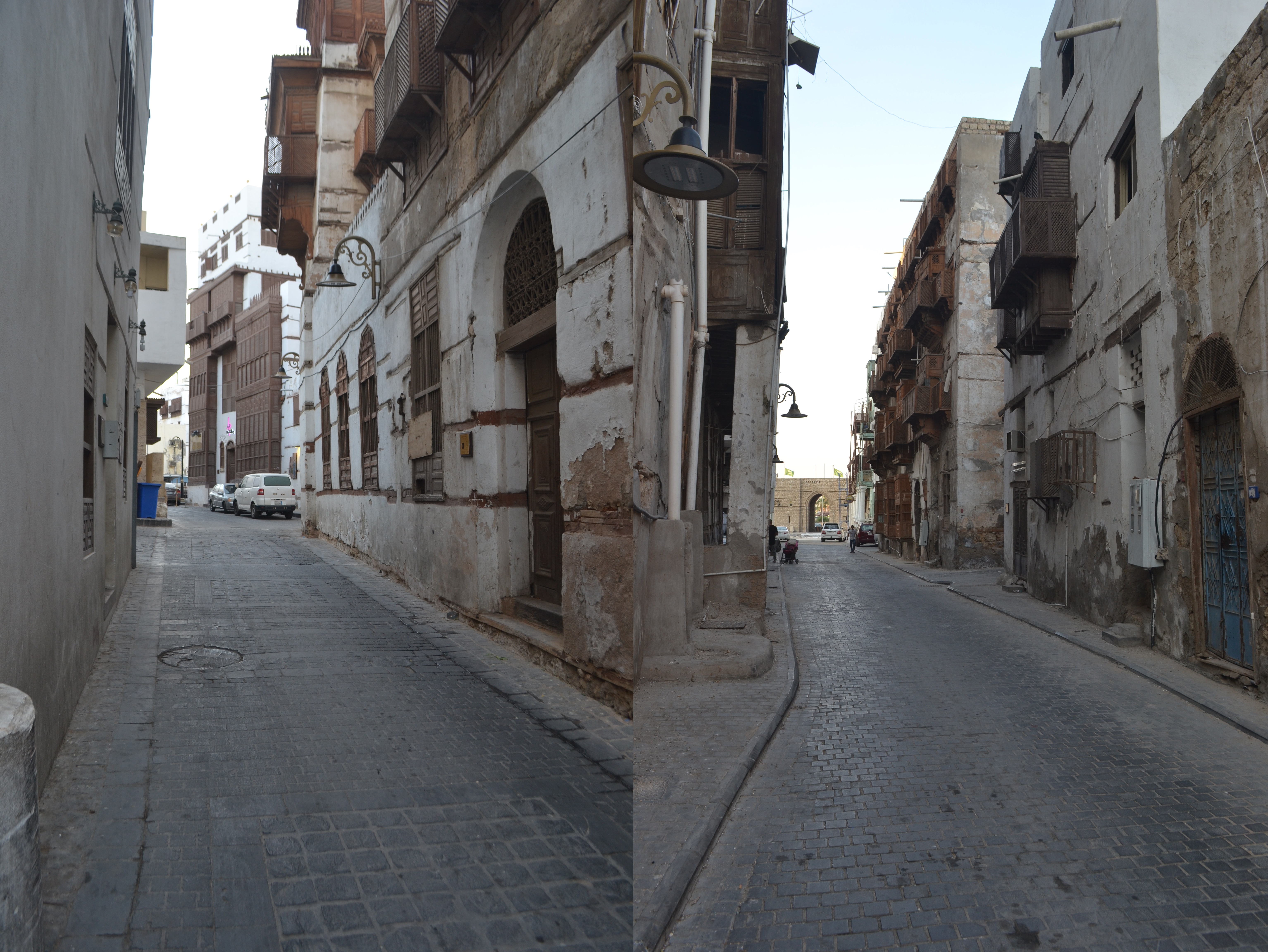
Historical Barahas
Barahat or Baraha are the wide and open places between the most populated areas, Baraha are mostly surrounding the mosques and family houses. Small Cafe which is locally called Gahwa-s and local shops are also found around Barah-s. A local shopkeeper who is actually inhabitant of neighboured watch after the community and give assistance and social help to the people and families inspect the Baraha.
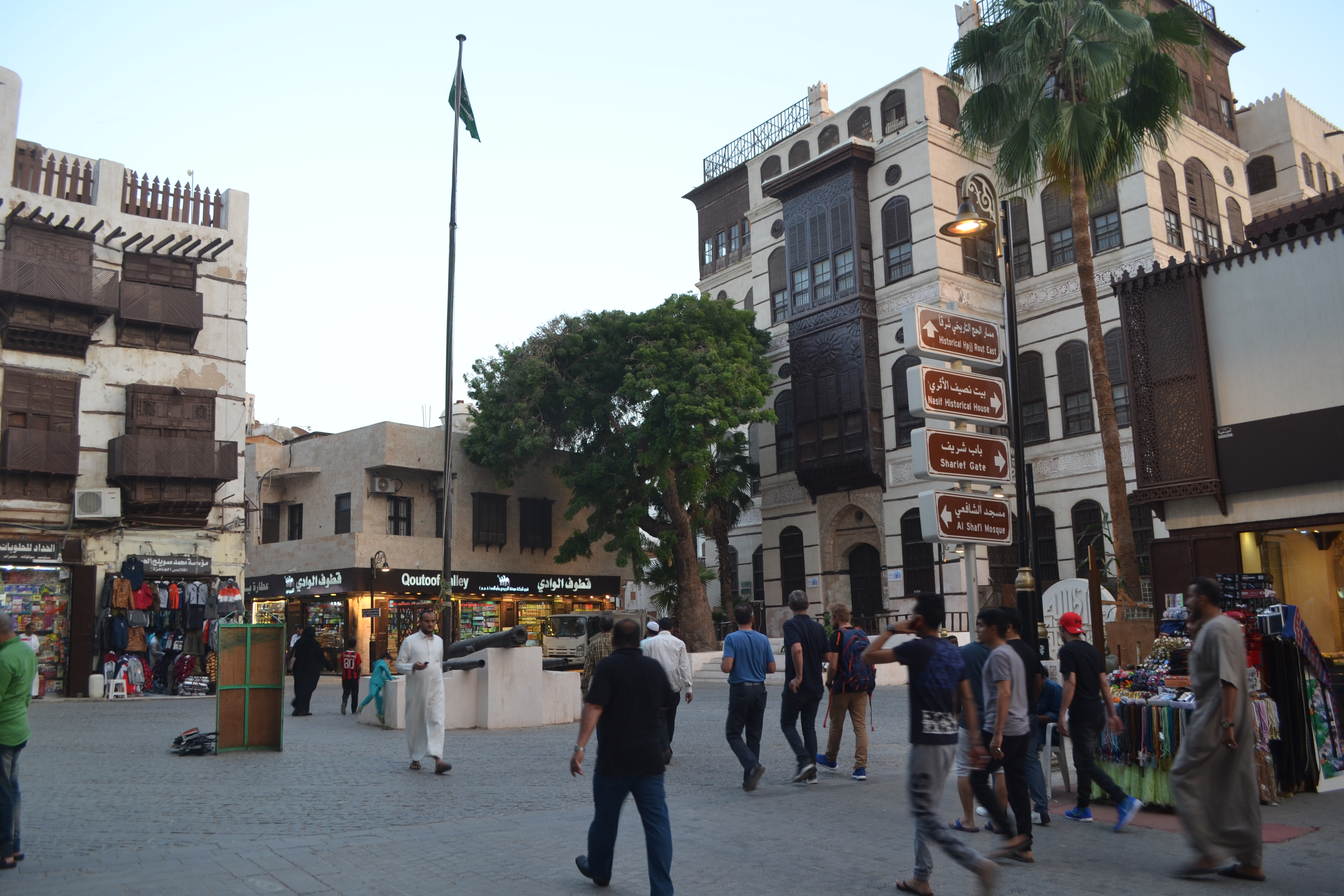
Zawia & Ribat
Zawia term is use for local mosque. While the Ribat are the buildings which are used for the residence of widows, needy and poor women and elderly persons
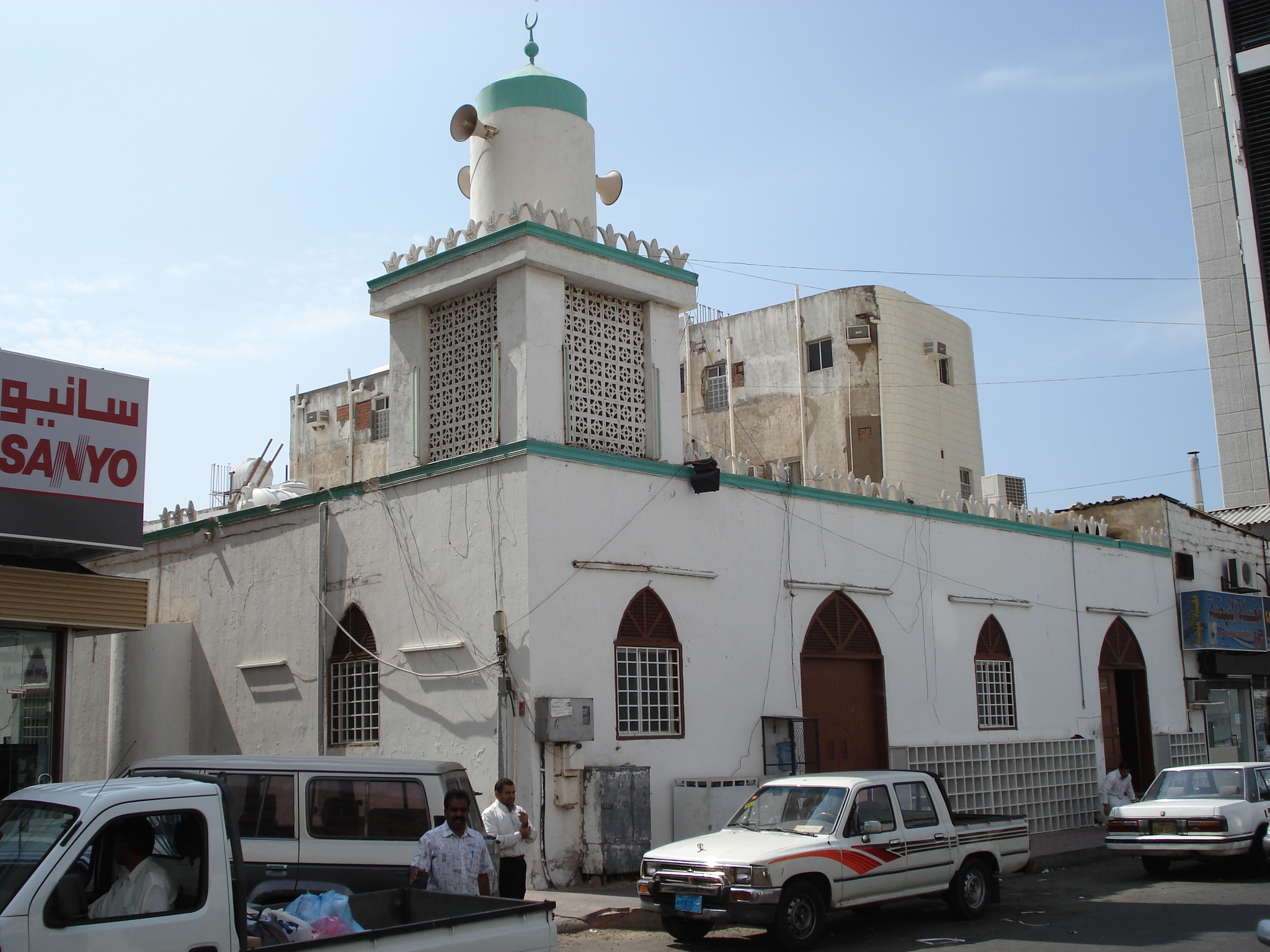
Zawia
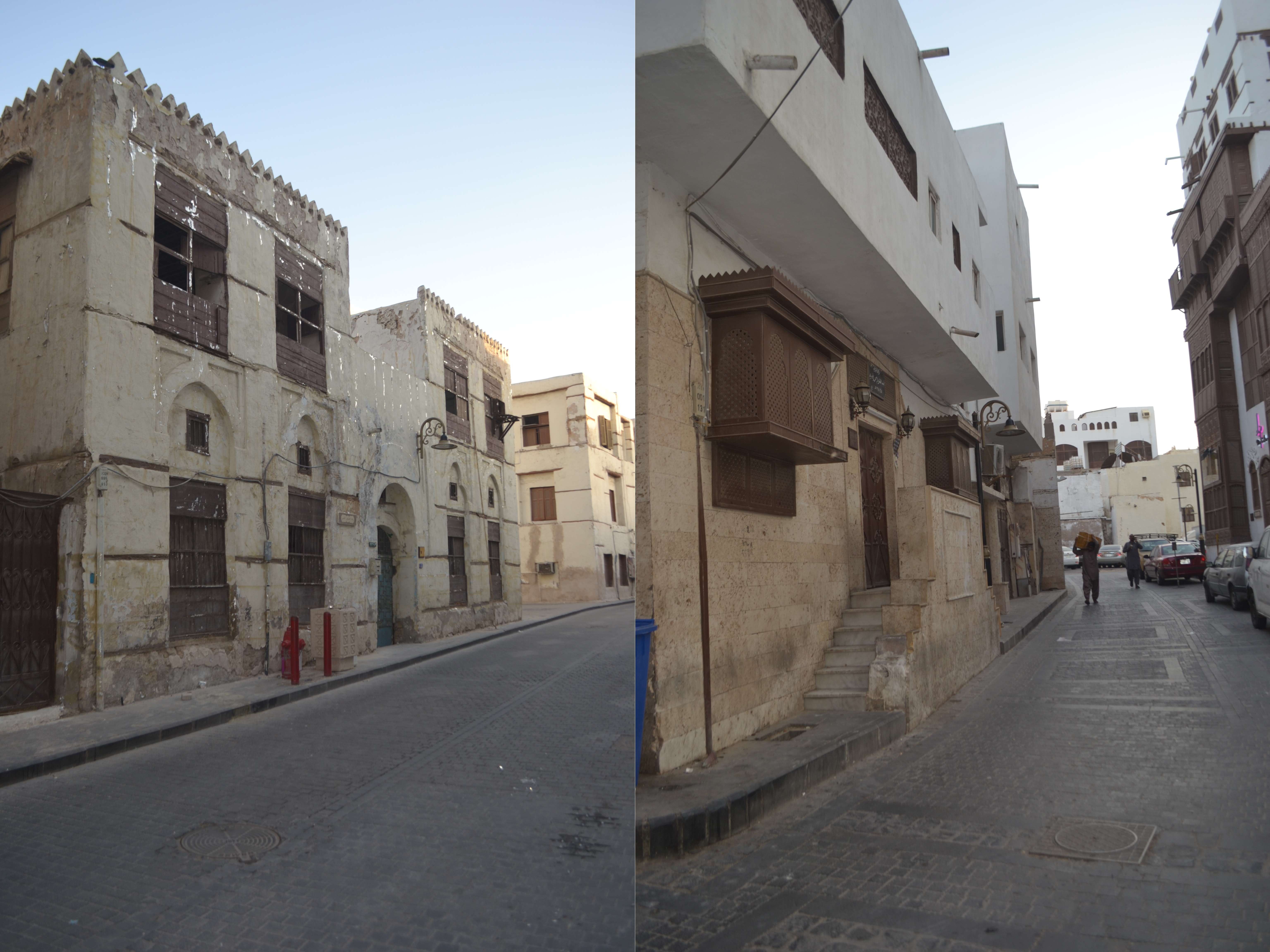
Rabit
Bab
In external main door Roshans are also used. The doors are double leaved which are designed by carved panels showing the best carpentry design of Arabia. The main door of Jeddah’s house having great traditional attraction which are tall in size and decorated with carved stones and plaster.
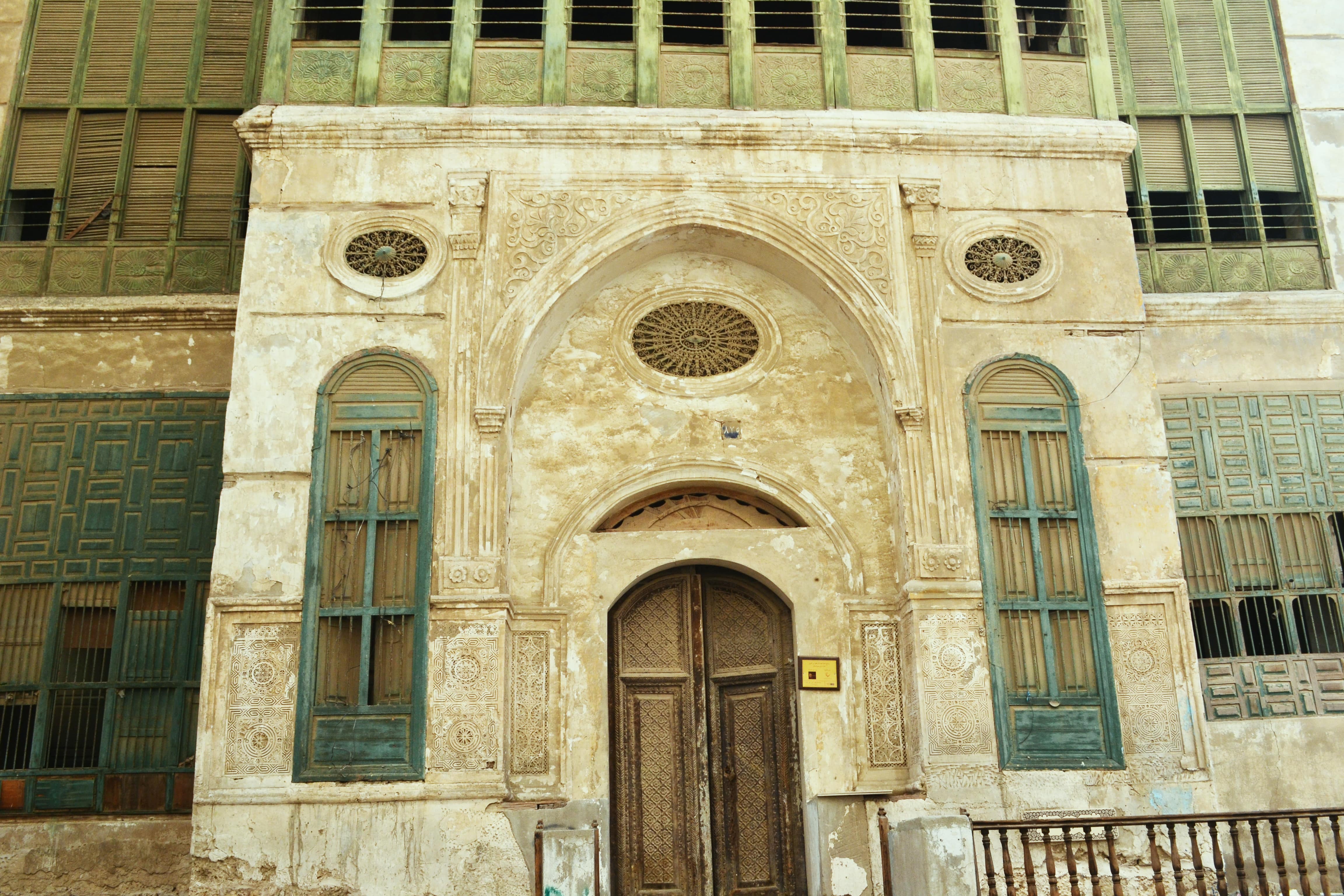
Dakkah
A plane structure which is locally called Dakkah is usually constructed at the inner side of the room afterward to Roshan. This may 30 to 50 cm high from ground and usually roofed with a beautiful carpet. Some traditional cushions which are filled with cotton are kept on the carpet. The women as well as whole family sit on this platform to take an outside look from Roshans.
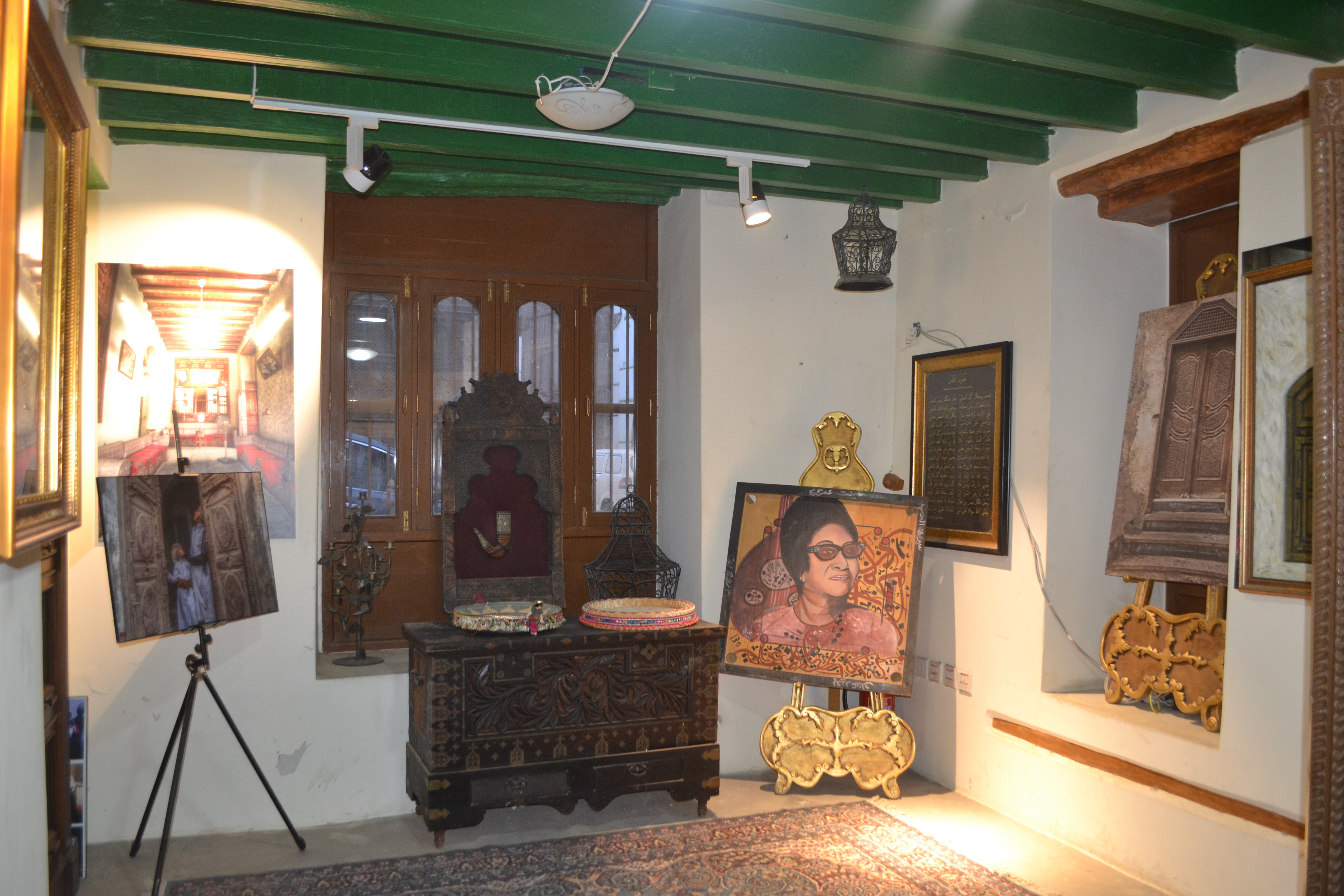
Historical Mosques
There are number of historical mosques are present in historic town of Jeddah. The history of some historical mosques is;
Al Shafi’I mosque It is the oldest mosque which was built in 13th century. It has a unique type of tetrahedral structure.
Othman bin Affan mosque The other name of this mosque is Ebony mosque because of its two ebony poles. This mosque was also mentioned by Ibn Battuta and Ibn Jabir and was built in 15th century.
Al Pasha mosque This mosque was built by Turkish Baqir Pasha in 1735 AD. This
Al Mem’ar mosque This is an old architectural style mosque which was built in 20th century.
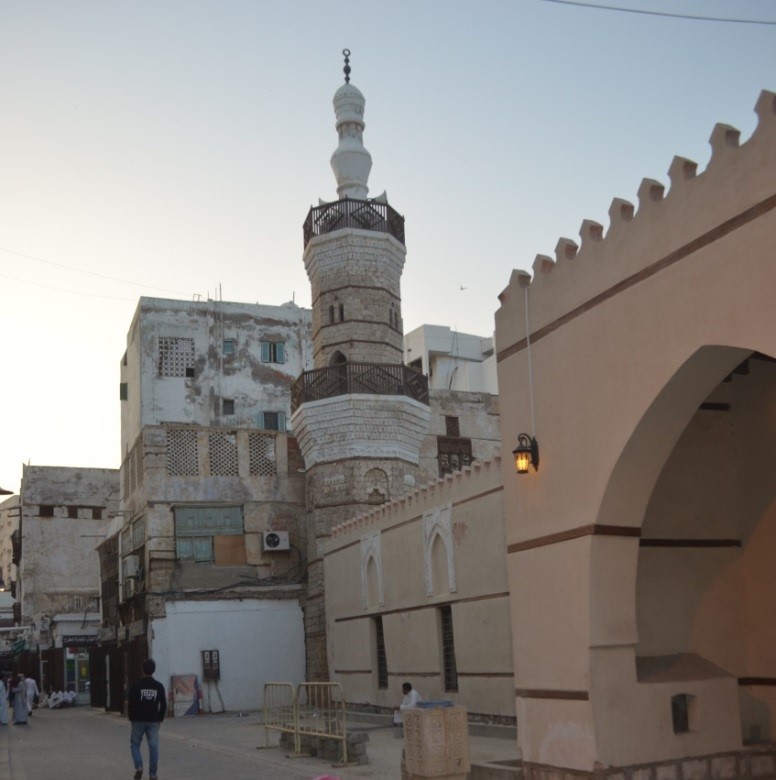
Al-Shafi Mousque
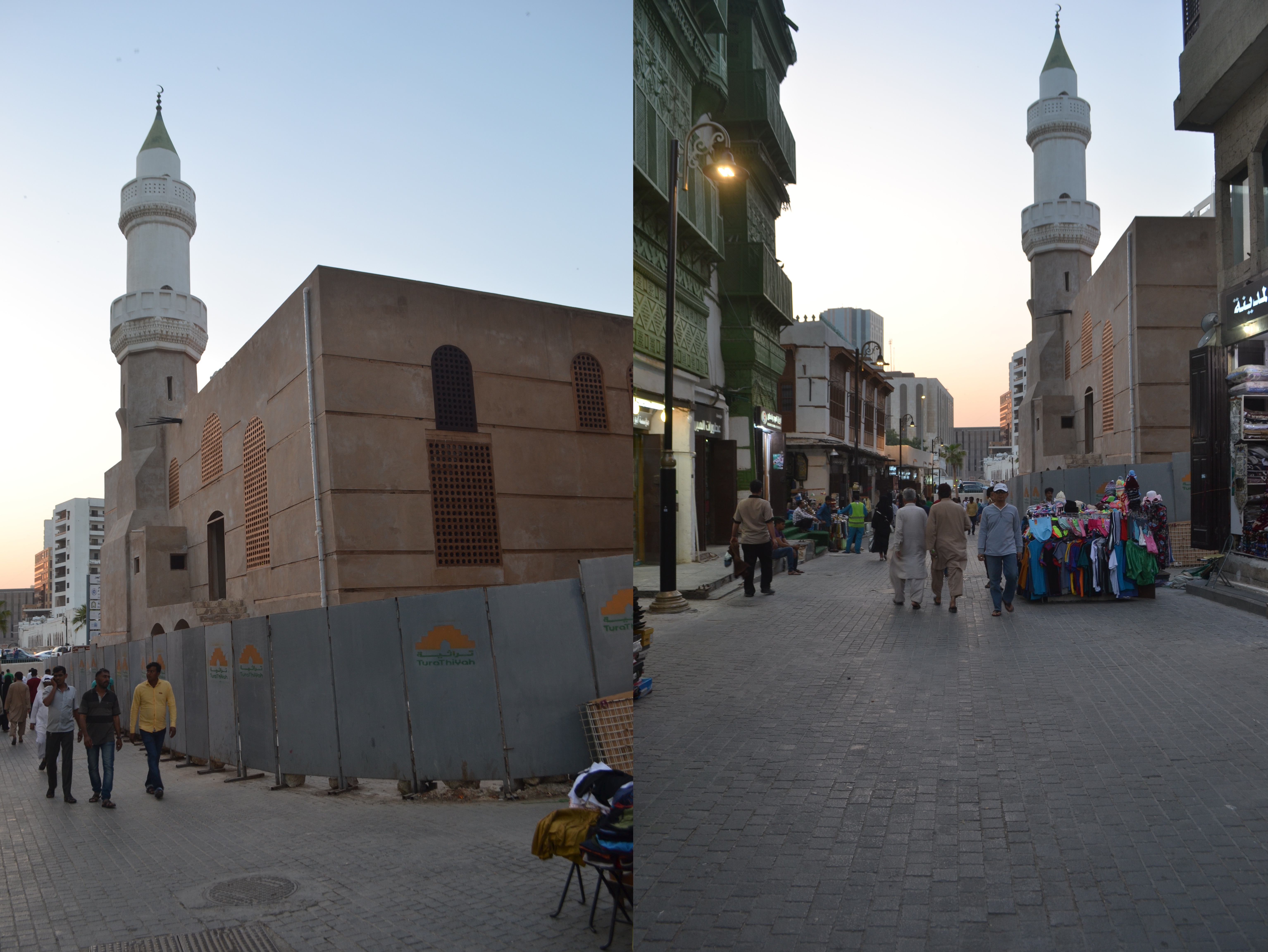
Al-Mema Mousque
Historical Jeddah Souks
The souks covered the area of about 1.5 km2 in Old Jeddah wall. The souks still show the cultural and traditional life style. The area is mostly covered by mosques and markets with traditional shops styles. Some important and well known souks are Souk Gabil, Souk Al Aluwi, Souk Al Baddu and Souk Al Nada.
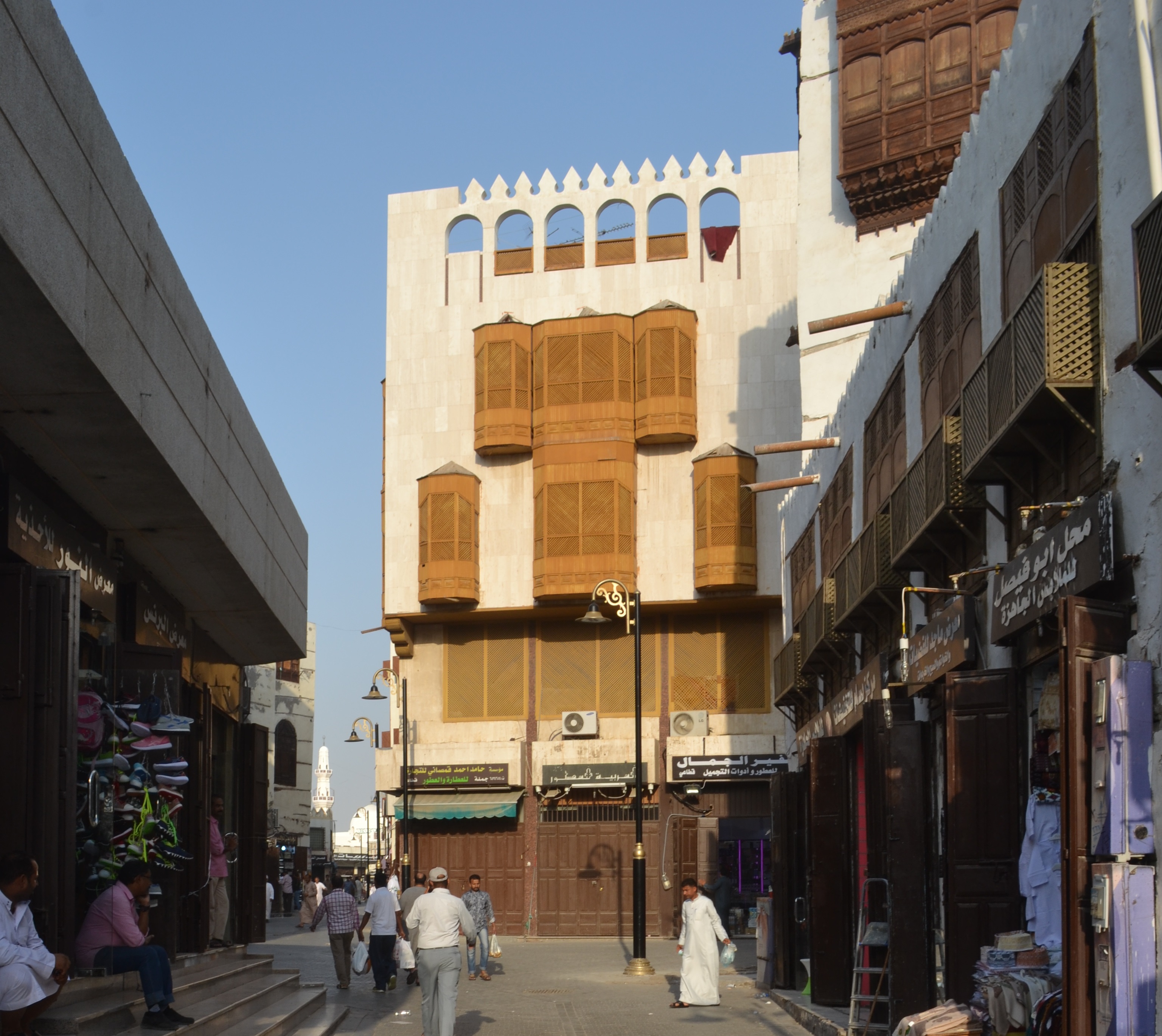
Events in Historical Jeddah
The Historic Jeddah Festivals recalls the past story of old Jeddah, which belongs to the both of people and the place. These festivals represent the different eras through which Jeddah had passed about a half century before. These events are full of joyful activities like shows and programs. The purposes of celebrating these shows are to remembrance the social and cultural values of old Jeddah. Moreover, the major aims of these events are to promote the regional culture, literature, Islamic history and tourism. These events proved helpful to preserve the cultural and heritage treasure of old Jeddah. Events show the glorious history of the state also with the thriving present. In these events locals and foreign visitors peek the past’s episodes and new generations are able to know about regional culture, heritage, traditions and history. By arranging shows, programs, games, dramas and exhibitions the cultural and heritage values are promoted.
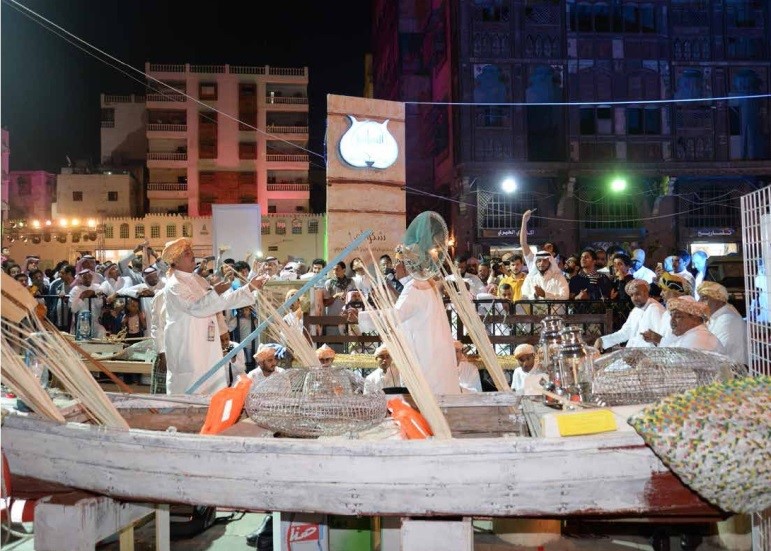
A cultura show
